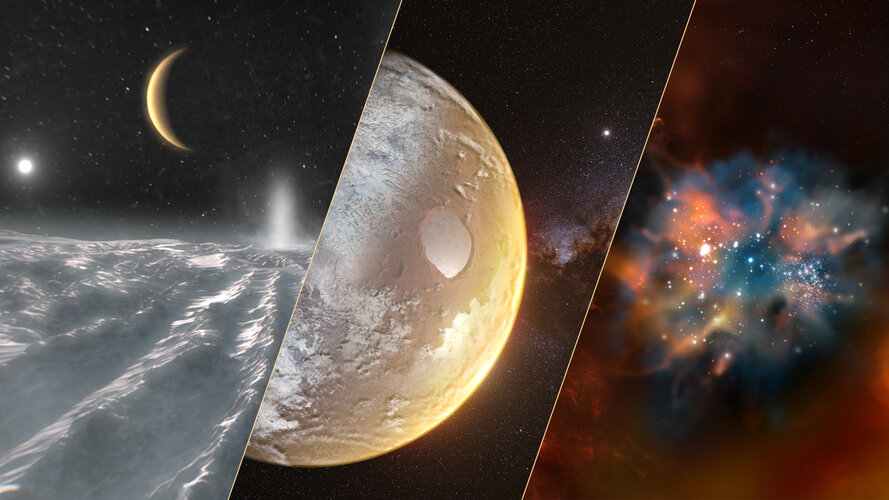“The selection of the Voyage 2050 themes is a pivotal moment for ESA’s science programme, and for the future generation of space scientists and engineers,” says Günther Hasinger, ESA Director of Science.
“Now that Cosmic Vision has taken shape with a clear plan for our missions until the mid 2030s, we must start planning the science and the technology we’ll need for the missions we want to launch decades from now, and that is why we are defining the top-level science themes of the Voyage 2050 plan today.”
A call for ideas for Voyage 2050 was issued in March 2019, generating close to 100 diverse and ambitious ideas, which were subsequently distilled into a number of science themes. Topical teams, comprising many early career through early scientists from a broad range of space science expertise areas, carried out an initial assessment of the themes and reported their findings to a senior science committee. This committee was tasked by the Director to recommend not only science themes for the next three large-class missions following the Jupiter Icy Moons Explorer, Athena and LISA, but also to identify potential themes for future medium-class missions, and recommend areas for long-term technology development beyond the scope of Voyage 2050. The science themes were selected by ESA’s Science Programme Committee at a meeting on 10 June 2021. The specific missions themselves will be selected in due course when ESA issues individual calls for mission proposals.
“The Voyage 2050 plan is the result of a significant effort of the science community, of the topical teams, and of the senior committee who contributed to such a lively and productive debate to arrive at this outstanding proposal,” says Fabio Favata, Head of the Strategy, Planning and Coordination Office. “Voyage 2050 is setting sail, and will keep Europe at the forefront of space science for decades to come.”



